Discovering Vihara Satya Dharma
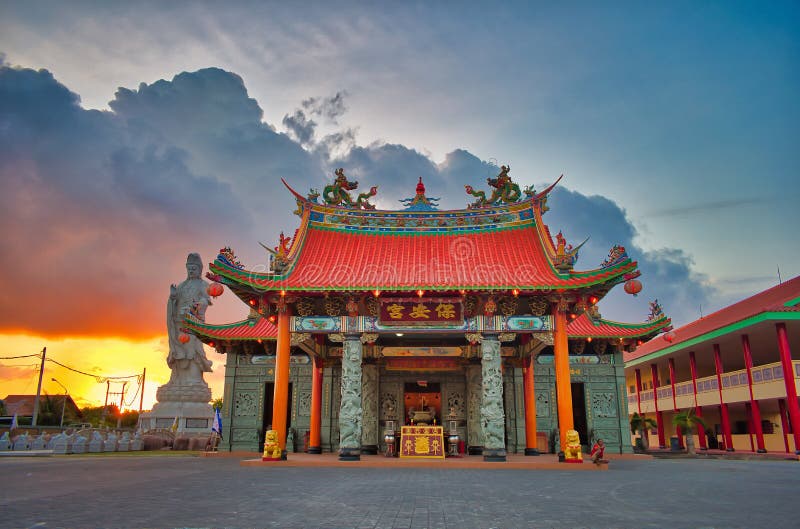
Bali’s Grand Chinese Temple by the Sea
When people think of Bali, they often imagine Hindu temples, lush rice terraces, and coastal retreats. However, in the harbor area of Tanjung Benoa, South Bali, stands a lesser-known but culturally significant place of worship Vihara Satya Dharma.
This vibrant Chinese temple is not only a spiritual center for the local Chinese-Indonesian community but also a symbol of Bali’s religious harmony and cultural diversity.
Historical Background
Vihara Satya Dharma was officially opened in the early 2000s to serve the Chinese community in Bali, particularly those involved in maritime trade and fishing. Its location near Benoa Harbor is intentional, as many of the deities worshipped in the temple are revered by seafarers and those seeking protection at sea.
Although it is a relatively modern temple, the roots of Chinese spiritual practices in Bali go back much further, brought by Chinese immigrants who settled along Bali’s coasts over several centuries. This temple continues that tradition while incorporating modern touches and serving as a vital spiritual center today.
Architectural Highlights
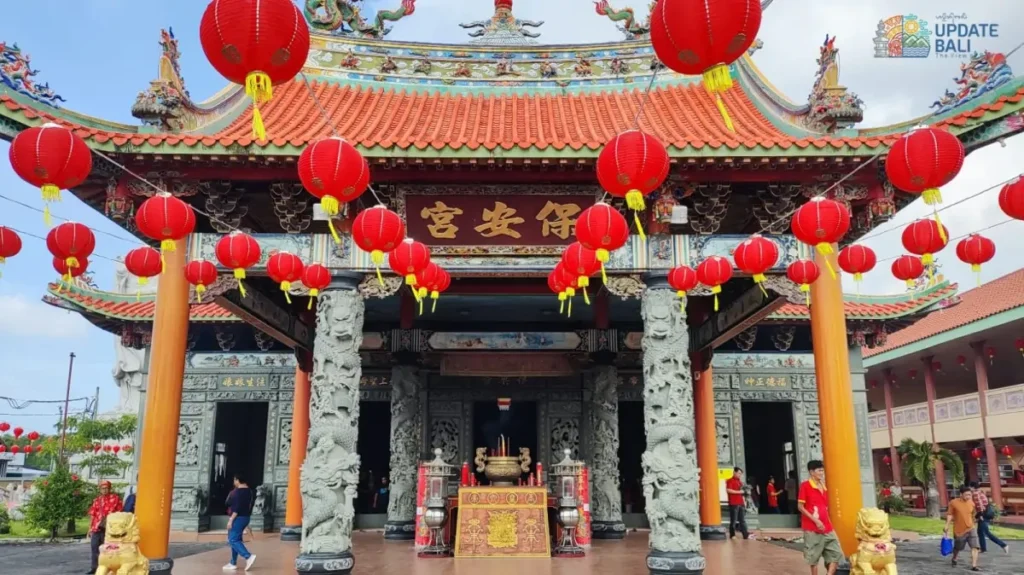
The temple is a visual masterpiece, featuring traditional Chinese architectural elements and elaborate decorations. Visitors are immediately drawn to the grand entrance, which is flanked by guardian lions and carved with Chinese characters symbolizing luck and protection.
Key architectural features include:
- Red and gold pillars, wrapped with intricately carved dragons
- Curved tiled roofs, adorned with ceramic phoenixes and mythical creatures
- Wide open courtyards designed for prayer, reflection, and ceremonial gatherings
- Altars with bronze urns for incense and candle offerings
Each design element holds symbolic meaning. The color red is associated with happiness and fortune, while the dragons symbolize power and guardianship. The symmetrical layout reflects the balance between heaven, earth, and humanity.
Deities and Religious Significance
Vihara Satya Dharma is a multi-faith Chinese temple, incorporating elements of Buddhism, Taoism, and Confucianism. Several altars are dedicated to key deities, including:
- Mazu (Goddess of the Sea), protector of sailors and fishermen
- Guan Yin (Bodhisattva of Compassion), known for her kindness and mercy
- Thian Shang Sheng Mu, another sea goddess commonly worshipped by coastal communities
- Kwan Kong, the god of loyalty, justice, and war
- Tudigong, the Earth God, believed to guard local land and homes
Devotees come here to offer prayers for safe journeys, business prosperity, health, and family blessings. It is common to see people lighting incense, bowing three times at each altar, and presenting offerings of fruit, rice, and flowers.
Cultural Celebrations
Vihara Satya Dharma plays a central role during Chinese festivals in Bali. The most notable include:
- Imlek (Chinese New Year) – Celebrated with lanterns, dragon dances, fireworks, and family prayers
- Cap Go Meh – Held fifteen days after Chinese New Year, marking the end of the festive period
- Waisak (Vesak Day) – Celebrated by Buddhists to honor the birth, enlightenment, and death of Buddha
During these events, the temple is decorated with red lanterns and becomes filled with the sounds of drums, bells, and devotional chanting. Visitors during festival times can witness vibrant cultural expressions, traditional rituals, and a strong sense of community.
A Peaceful Place to Visit
On regular days, the temple offers a quiet and contemplative atmosphere. It is far less crowded than Bali’s famous Hindu temples, making it a serene destination for those seeking peace or spiritual reflection.
While non worshippers are welcome to visit, it is important to be respectful. Modest dress is recommended, and photography should be done discreetly, especially during prayer times.
Location and Visitor Information
Address: Jalan By Pass Ngurah Rai, Tanjung Benoa, South Kuta, Bali
Opening hours: 07.00 – 18.00
Entrance fee: Free (donations appreciated)
Getting there: About 20 minutes by car or motorbike from Nusa Dua, 30 minutes from Jimbaran
There is a small parking area in front of the temple, and the grounds are accessible to all visitors.
Tips for Travelers
- Morning visits are ideal for lighting, photography, and avoiding the afternoon heat
- Dress respectfully, with shoulders and knees covered
- Avoid loud conversations inside the prayer halls
- Combine your visit with nearby attractions such as Tanjung Benoa Beach or a seafood lunch in Benoa village
Final Thoughts
Vihara Satya Dharma is a powerful representation of Bali’s cultural mosaic. While it may not appear in every travel guide, it is one of those hidden places that offer quiet beauty, cultural insight, and spiritual depth.
Whether you are interested in Chinese culture, religious diversity, or simply wish to explore something off the typical tourist path, this temple provides a rewarding and memorable experience.


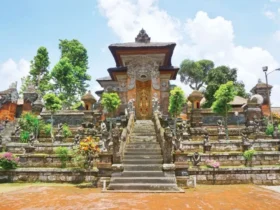
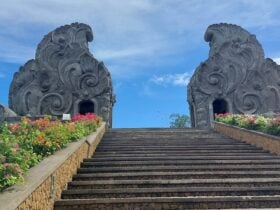





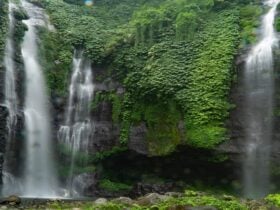
Leave a Review